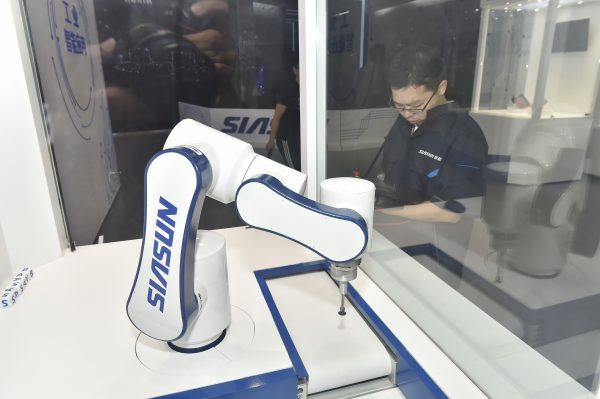But while pressures from the United States could inhibit progress in the short run, they could also further stimulate techno-nationalist efforts — reminiscent of the withdrawal of Soviet assistance in the early 1960s — to build more independent Chinese systems for research and innovation. Four characteristics of Chinese scientific development will condition its response to a technology war.
First, the complex interactions between China’s exposure to international science and technology and its indigenous development experiences present cultural conflicts as well as policy challenges. The international environment — especially interactions with the United States — strongly influenced the speed and direction of Chinese science and technology. While tapping into the resources of the international environment, China also put in place a series of domestic research, education and industrial policies to enhance indigenous capabilities and to facilitate the assimilation of knowledge from abroad. Although this dual-track strategy has been largely successful, underlying tensions between the ‘foreign’ and the ‘domestic’ persist and shape political and cultural orientations towards science, technology and innovation.
Second, there has long been a divide between Chinese industrial enterprises and a research system centred in universities and in the Chinese Academy of Sciences. Until recently, the enterprise sector lacked a strong research orientation and sought proven technologies from abroad instead of longer-term developmental cooperation with the domestic research system.
Despite pressure from the state to ‘serve national needs’, the research system at its best has evolved into a cosmopolitan community producing internationally recognised publications and novel technologies, but lacking a strong commitment to cooperation with domestic enterprises. The technology war is likely to reinforce recent trends towards more effective ‘research to production’ relations and, as in the 1960s, the aligning of the technical community with national strategic objectives.
Third, features of the Chinese political system strongly influence the nature of Chinese science and technology. The Chinese Communist Party (CCP) imposes the terms of state–society relationships, long favouring the use of policy preferences to support the state’s agenda. Science is seen as serving the interests of the state, with little room for more autonomous realms supporting the activities of a professional community or the growth of a private economy.
The strengthened role of the CCP in research, educational and industrial organisations under President Xi Jinping is intended to boost scientific and technological development and has been characterised by generous infusions of funds, ongoing reforms to correct systemic weaknesses and careful analyses of international trends. However, it also introduces elements of political rigidity which seem antithetical to the genuine creativity which the state now seeks to foster.
Fourth, China faces a challenge in building a world-class talent pool. China’s improved higher education system is churning out large numbers of science and engineering graduates. But many of China’s brightest seek graduate training abroad and subsequently often build distinguished careers outside of China. In order to encourage these graduates to return — especially those in fields important for national research policy — China has initiated talent programs, now targeted by the United States in the technology war. These programs have had mixed success, with many of China’s leading researchers preferring to maintain their primary professional bases in the United States while attempting to balance cosmopolitan impulses against residual patriotism. Whether US policies will drive leading talents back to China remains to be seen, as does the larger question of the future of the extensive trans-pacific ‘brain circulation’.
Chinese policymaking reflects an awareness of the problems emanating from these characteristics of the country’s development and of being a ‘latecomer’ to scientific and technological prominence. China has become a successful ‘fast follower’ in established industries and technologies, but the churn of its policy thinking has always included strategies of ‘leapfrogging’ to new technologies underlying new industries in which China could have a leadership position.
While China may suffer setbacks in some areas of the high-technology industry that rely on countries such as the United States, there will likely be a renewed policy effort to push research and technological frontiers into new areas of high value-added production. This is already evident in areas such as quantum communications and AI. These policies, combined with an ethos of science serving the interests of the state and appeals to nationalism, will consolidate trends towards the development of an identifiable ‘Chinese model’ of research and innovation.
A critical question about the future of the Chinese model is the extent to which the technology war will lead to a ‘decoupling’ from the broader international system, as some policymakers in Washington are attempting to promote.
Decoupling impulses may lead to a spilt in the way science is done in the 21st century — like driving on the right and driving on the left, as some in China now muse. Such a split challenges norms of universalism in science and does not bode well for international consensus on such critical questions as scientific integrity and ethical responses to new technologies.
Some observers argue that despite concerns about a split, this is an era characterised by the globalisation of research and innovation which makes this scenario unlikely. China is still highly dependent on access to Western technology and research environments. There is much to be said for these arguments. But they may underestimate the extent to which decoupling initiatives are already eroding trusted norms of international cooperation — norms which will not be easy to re-establish. The metaphor of driving on either the right or the left and the realities of an evolving ‘Chinese model’ need to be taken seriously for both its creative possibilities and internal contradictions.
Richard P Suttmeier is Professor Emeritus of Political Science at the University of Oregon.

